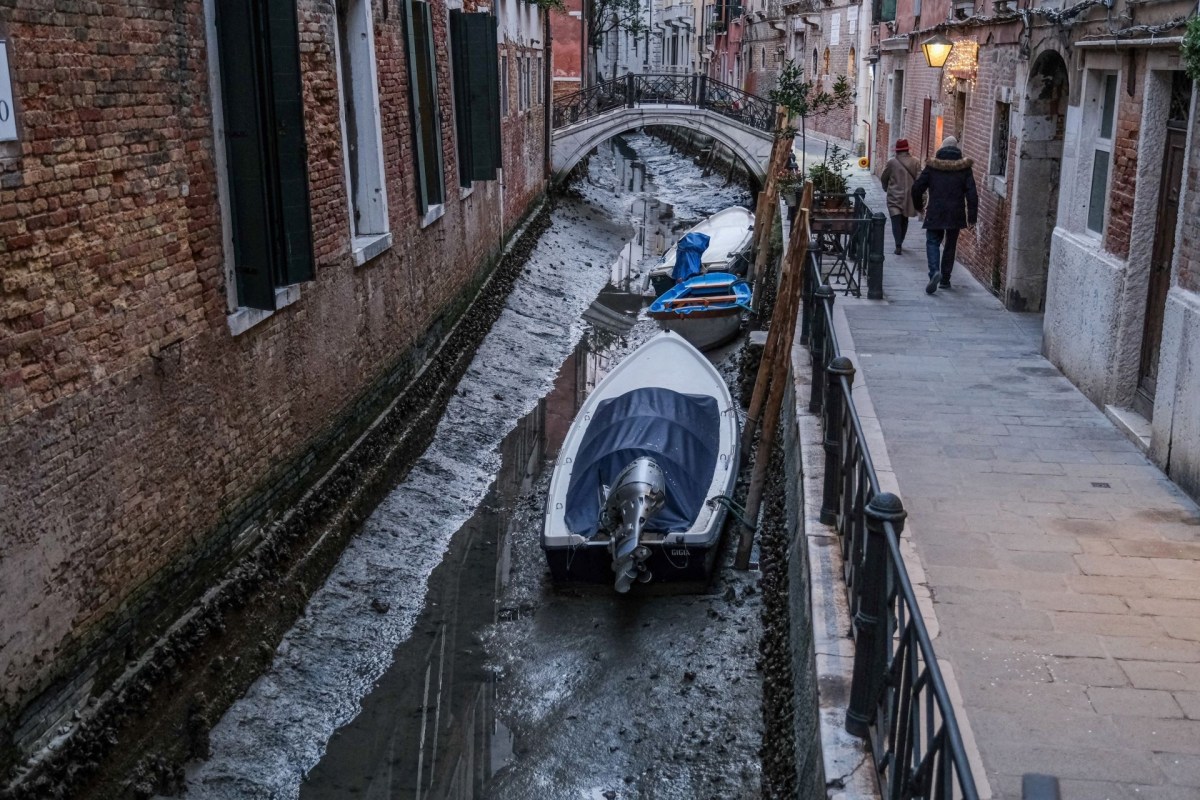Venice's waterways, gondolas, and beautiful architecture have been famous for centuries.
But right now, the historical Italian city is facing a series of challenges, with many of its canals drying up — impeding boats from moving across the water and affecting transportation, emergency services, and tourism.
What's causing the low water levels?
The low water level is due to a variety of factors, including a lack of snowfall in the nearby Alps — less than half of what the city normally sees.
Less rainfall is another obvious factor for the low water levels in the city's canals. The Po River, the longest in Italy, has about 61% less water than usual, worrying officials, scientists, and residents.
Other potential causes for the low water levels include a high-pressure weather system alongside a series of prolonged low tides.
Why so many changes?
Legambiente, an Italian environmental group, released a statement on Feb. 20 urging Italian governments to take further action toward protecting its water resources.
Giorgio Zampetti, a Legambiente employee, was quick to point out what is causing the drought.
"2023 has just begun, but it is showing worrying signs in terms of extreme climatic events, levels of drought," Zampetti said in a statement.
While Venice's proximity to water has made residents historically wary of flooding, the city is not totally unfamiliar with droughts, either. Just last year, the areas around Venice experienced their worst drought in about 70 years.
But despite the city's drought, worsened by our overheating planet, Venice is still at an extremely heightened risk of facing more floods in the future. NASA has found that dangerous "high-water events" that previously happened just twice a decade are now happening 40 times a decade.
So as Venice faces the threat of drought, it is crucial that it plans for both an abundance as well as a scarcity of rainfall in the future. Careful planning and coordination with scientists, agricultural workers, and government officials will help protect this marvelous city and those who inhabit it.
Join our free newsletter for cool news and cool tips that make it easy to help yourself while helping the planet.









